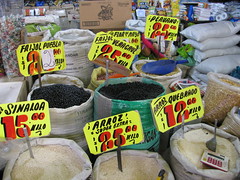I predict that we (using the term in its widest possible sense) will understand the links between growing conditions and yield much more deeply. In particular, how changes in a plant’s environment will affect its output.
This is based on Heat, Humidity and Crop Yields, a post by Michael J Roberts, who has an economist’s ability to build complex models that explain some things rather well. The latest looks at how much better predictions of yield are when vapour pressure deficit is added to the model. As Roberts explains:
Vapor pressure deficit, a close cousin to relative humidity, has a linear relationship with evaporation, and is a key input in many crop models.
The point is that VPD is not that easy to measure, but that if you manage to do so, it is very handy.
There are two interesting things about the VPD measure we construct. First, average VPD for July and August is closely associated with our best-fitting extreme heat measure, at least in Illinois. Second, adding VPD for the season and VPD for July and August to our standard regression greatly improves prediction. Using just five variables, these two plus growing degree days (degree days between 10C and 29C), extreme heat degree days (degree days above 29C) and precipitation, we can explain over 70 percent of the variance of Illinois yields, excluding the upward trend. That’s better than USDA’s August and September forecasts, which are based on field-level samples and farmer interviews. The model can explain almost half the difference between the August forecast and the final yield for Illinois.
OK, so it is only in Illinois. And only for maize. But it might yet end up improving crop prediction models more generally.
This would appear to be post No. 5000. That it deals not with agrobiodiversity but with the effects of climate change on a single species, and probably very few varieties of that species, seems rather fitting.

























